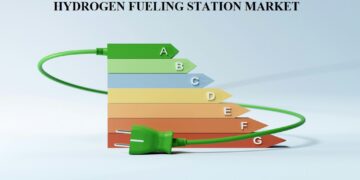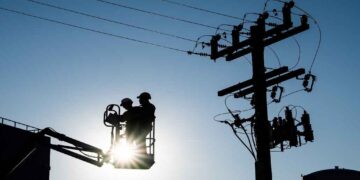In quite a prominent shift, the Federal Energy Regulatory Commission (FERC) has gone on to abandon its transmission incentives policy, especially the one with Construction Work in Progress incentives. This decision is indeed a pivotal change in how transmission projects get financed and regulated by potentially impacting shareholders throughout the energy sector.
In the past, transmission incentives such as CWIP happened to be designed so as to encourage funding and also the nation’s aging as well as overburdened transmission infrastructure. By enabling utilities to recover expenditures during the construction phase, FERC looked forward to decreasing the financial risk that was associated with large-scale transmission projects. These incentives were intended to push the required upgrades and expansion so as to maintain grid dependability and also integrate renewable sources of energy.
But the recent developments have led FRC to go ahead and reconsider the efficacy as well as the requirement of these incentives. A significant case in point is the transmission incentives abandonment of the PSEG transmission project in the PJM interconnection area. This decision highlights a wider re-evaluation of the incentive structures, which, by the way, have been in place for years.
The logic behind the decision
The decision made by FERC to abandon the CWIP incentive policy goes on to reflect the rising issues when it comes to the effectiveness as well as fairness of such an incentive. Critics go on to argue that such incentives can as well lead to a bloated cost as well as financial imprudence since utilities might have less incentive to control costs or optimize project efficiencies.
In addition to this, there is also a concern that CWIP incentives go on to contribute to much higher electricity rates for consumers since the costs of these projects get passed on to them directly.
The decision also syncs with a wider regulatory trend in terms of increasing scrutiny as well as ownership when it comes to utility investments. There is indeed a push for a more performance-based path in which incentives get tied directly to the results, like reliability, enhancement, and cost-effectiveness, and not simply reduce the financial risk and burden when it comes to project development.
What implications does it have for stakeholders?
CWIP incentives abandonment is going to have numerous implications for stakeholders in the energy sector-
Utilities – When it comes to utilities, especially those that happen to be planning prominent transmission investments, depending on CWIP incentives, this transition introduces a level of uncertainty. They will have to reevaluate their funding strategies and also seek choices when it comes to financing mechanisms. The transition could potentially lead to unwanted delays in transmission projects since utilities are alter to the new regulatory environment.
Investors – Investors within the utility infrastructure projects could face rising risk and potentially lesser returns. The CWIP incentives absence can make transmission projects much less attractive by affecting the investment flows within the sector. The transition could also lead to a rise in scrutiny as far as the cost management and operational efficiency of transmission projects are concerned.
Consumers – On the consumer front, the striking of CWIP incentives can be a mixed bag. Although it might aid in avoiding cost overruns and also inefficiencies that could lead to high electricity costs, it can also hamper a slowdown in the required infrastructure improvements. This kind of delay might affect the grid dependence and also the integration of renewable sources of energy, thereby potentially affecting the electricity prices and also sustainability objectives in the longer run.
Regulatory Bodies – This decision also reflects a wider regulatory trend when it comes to performance-based incentives and also rising scrutiny. Other regulatory bodies as well as jurisdictions might as well follow the lead given by FERC by ending up in a cluster of reassessments of incentive structures throughout the energy sector. This can as well result in a more stringent evaluation of incentives that sync with the broad energy policy goals, such as enhancing the grid dependability and also supporting the transitions in clean energy.
What lies ahead?
Going forward, the energy sector will have to adapt to this regulatory transition. The emphasis will likely move more towards developing novel mechanisms so as to support transmission investments while at the same time making sure that cost-effectiveness and reliability happen to be there. Performance-based incentives along with innovative financing structures might as well emerge as choices to the CWIP incentives.
Moreover, the transition away from the CWIP incentives goes on to present a choice for stakeholders to discover more efficient and sustainable approaches. As far as transmission. Infrastructure development is concerned elevated transparency control tools and incentives based on outcomes can play a critical role when it comes to shaping the transmission investment future.
Overall, the abandonment of CWIP transmission incentives by FERC marks a prominent regulatory alteration with wide implications for utilities, consumers, and, of course, the investors. As the energy sector goes on to adjust to this transition, the emphasis is going to be likely on finding novel ways to balance the encouragement and investment with that of cost management and office and also operations.




































